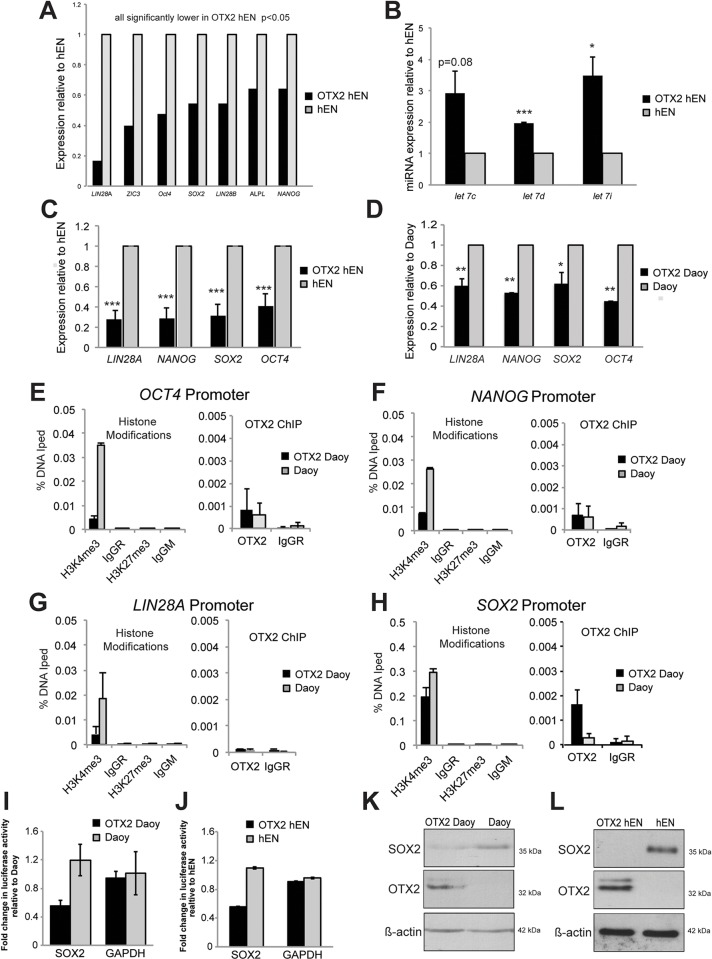Fig. 4.
OTX2 overexpression significantly decreases levels of hESC genes. (A) Results from global gene expression analysis demonstrating overall downregulation of hESC pluripotency genes in OTX2-overexpressing hENs. Graph represents n=3 biological replicate pairs of OTX2 hEN and hENs. All transcripts are significantly different. (B) Upregulation of representative miRNA targets of LIN28A following OTX2 overexpression in hENs. n=3 independent biological replicates. (C,D) Validation of hESC transcript downregulation in hENs (C) and Daoy (D) following OTX2 overexpression by qPCR. Error bars: s.e.m. *P<0.05, **P<0.01, ***P<0.001. (E-H) Comparative ChIP-qPCR analysis for OTX2 binding and histone modifications (H3K4me3 and H3K27me3) on the OCT4, NANOG, LIN28A and SOX2 promoters in OTX2+ Daoy versus Daoy cells. Error bars: s.d. (I,J) Luciferase activity in OTX2+ Daoy (I) and OTX2+ hEN (J) following transfection of a SOX2 promoter reporter construct. Error bars: s.e.m. Luciferase activity was normalized relative to control Daoy or hEN. (K,L) Western blots depicting decreased levels of SOX2 in Daoy SHH MB (K) and hEN cells (L) following OTX2 overexpression. β-actin serves as a loading control.

